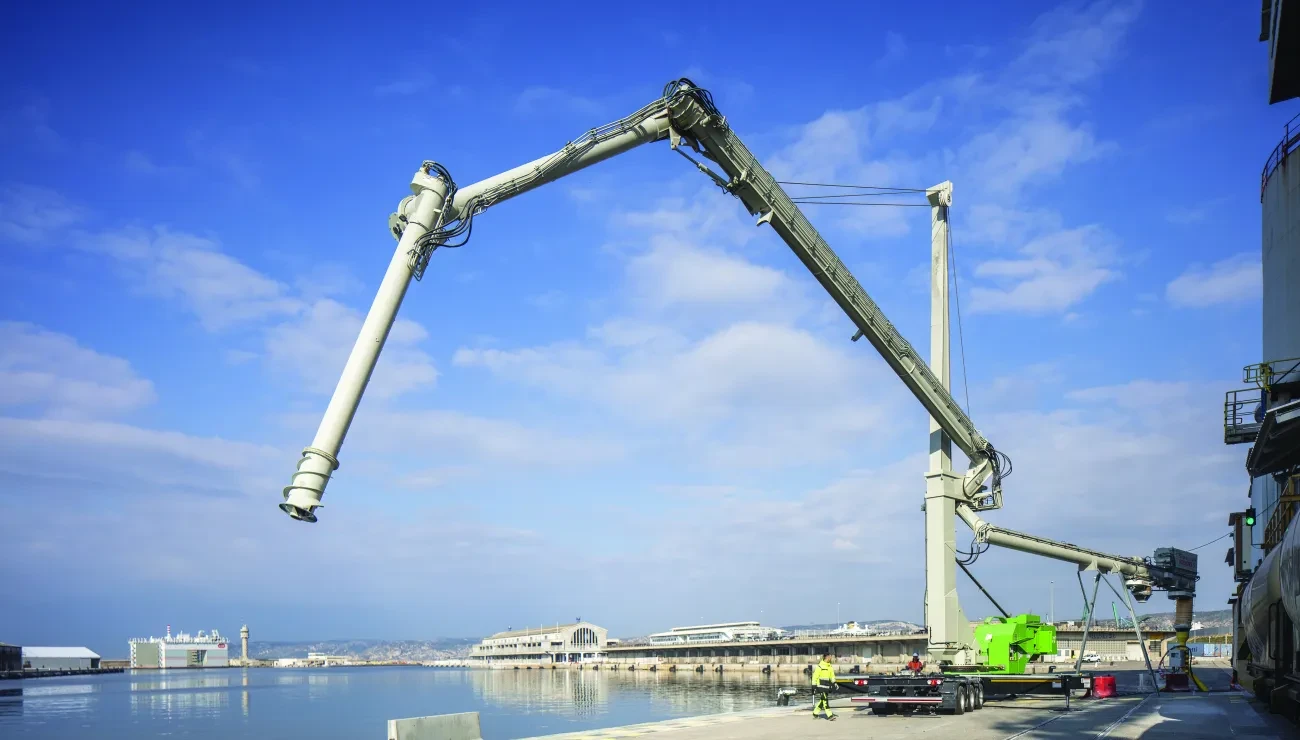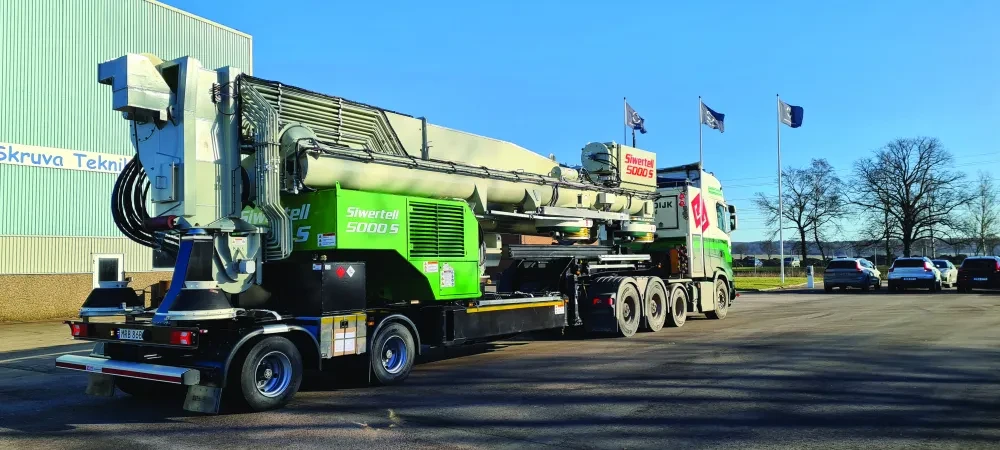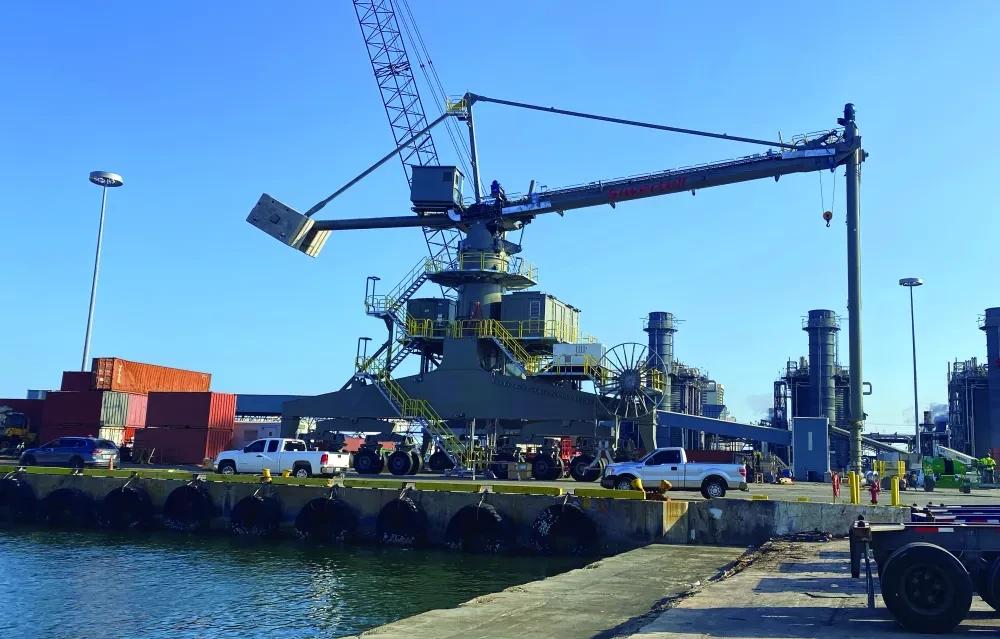
Unleash the potential of multipurpose ports with mobile ship unloaders
6 Oct 2025Flexible dry bulk handling arrangements on the quayside are proving to be invaluable solutions for multipurpose ports; Siwertell ship unloading systems are offering significant operational advantages to operators that need agile assets that perform on every level
Although many follow trends, global trade in all major and minor dry bulk handing markets fluctuates significantly, and port terminals have to be responsive enough to sustain these vicissitudes. They also have to meet the pressure of increasingly strict environmental regulations if they are to secure or maintain operating licences, and work with the limitations of their geopolitics, organization and infrastructure.
Asset mobility and flexible dry bulk handling arrangements on the quayside are proving to be invaluable, enabling operators to respond, and optimize the profitability of multipurpose quays, where fixed dry bulk handling machinery, such as large, static rail-mounted ship unloaders, are not suitable or permitted.
How can operators best capitalize on a scenario where jetty utilization rates must be maximized, the highest levels of through-ship efficiency need to be achieved, but the quayside must be free when not in use?

Flexibility and performance
An excellent solution is mobile ship unloading technology. Siwertell systems are forerunners in this sector, not only capable of handling multiple types of dry bulk material, but they can be offered with a range of capacities and mobilities, deliver unparalleled flexibility, operational efficiency and environmental protection.
“Multipurpose ports and harbors are becoming a cornerstone of modern logistics, and offer numerous benefits when meeting the diverse needs of a global dynamic port-scape,” says Jan Karlsson, Sales Director, Bruks Siwertell. “Stakeholders in this arena have to think on their feet and look to state-of-the-art mobile dry bulk handling solutions to support them.”
Bruks Siwertell offers numerous systems optimized for mobile dry bulk handling. These can range from port-mobile and fully road-mobile models to larger, higher rated capacity machines that have rubber-tire gantries.
Port-mobile and road-mobile ship unloaders are based on the proven designs of larger-scale screw-conveyor systems, but are available relatively quickly as they comprise standardized components, which offers substantial costs savings and reduction in lead times.
“In-port mobility is significantly advantageous to multipurpose terminals, and offers some good cost arguments when handling one-off consignments at non-specialist quays, or small-scale operations at dedicated import quays,” Karlsson continues.

Multiple mobile assets
“Mobile unloaders should not just be considered suitable for smaller-scale, niche operations, however. With multiple port-mobile units in operation working alongside each other, directly unloading into trucks, dry bulk material can be moved very quickly to shore, dramatically reducing the time a ship stays in port and freeing up capacity for other activities on the berth,” explains Karlsson.
When finished, using a self-propelled rubber-tire gantry and an advanced steering system, the port-mobile unloader can be moved away from the quayside and even stowed when not in use. To secure the gantry in all directions when parked, the end pairs of axles, both on the sea-facing and land-facing sides, are turned by 90 degrees.
The port-mobile unloader has a low weight design and does not require rails or any other additional infrastructure or preparatory reinforcement to the quay. It is available in two sizes; a 400t/h and a 600t/h unit, both of which are capable of servicing vessels of up to 70,000 dwt.
As standard, they feature a double-truck loading system, with an optional third system. As they are not interlinked, one, two or all three loading positions can be used independently and simultaneously, delivering the fastest truck loading operation possible; a large-volume intermediate surge hopper also smooths any truck changeovers.
Transforming quays to terminals
“When fully road-mobile ship unloading systems are required, the agility, capability and overall performance of our road-mobile ship unloading range, is impossible to beat,” says Karlsson. “They can literally transform a quay with minimal infrastructure into a terminal.”
Road-mobile units have a folding structure, which is mounted on a semi-trailer for easy transportation between ports. It only takes 30 to 45 minutes to complete the set-up procedure, with packing away being equally rapid. The road-mobile ship unloader can be deployed by a single operative, keeping staffing costs low.
Siwertell road-mobile unloaders are available in three different sizes: the Siwertell 5 000 S, 10 000 S and 15 000 S; the largest offering an unloading capacity of up to 500t/h for discharging ships up to 15,000 dwt. In the last few years, Bruks Siwertell introduced ground-breaking changes to its road-mobile range with the introduction of next-generation models. Over a hundred road-mobile unloaders serve ports all over the world.
When operators need higher capacity ship unloading solutions to serve ports that are receiving vessels up to around 80,000 dwt, and are looking for the economies of scale that larger Siwertell ship unloading models can deliver, these can also be designed to be mounted onto mobile gantries. The most suitable models for this configuration are the Siwertell F-type and Siwertell M-type ship unloaders.
Step-changes in efficiency
References include those serving the US cement handling industry. For example, in the US Midwest, one operator was looking to secure higher capacities and sustainable cement import growth, and opted for a port-mobile Siwertell 490 F-type ship unloader. It was delivered in 2021 and offers high through-ship efficiencies and a rated cement handling capacity of 800t/h, discharging vessels up to 55,000 dwt.
While another operator in Tampa, Florida, will make the transition from bagged to bulk cement, using a rubber-tired gantry-mounted Siwertell ST 640-M ship unloader. It will handle cement at around 1,500t/h, discharging vessels of up to 80,000 dwt.
“Combine all the road and port mobility configuration options with the outstanding performance of Siwertell ship unloading technology, and you can see why operators are able to turn the challenge of a quayside that has to remain flexible into an opportunity for growth and market agility.
“If you consider this in connection with a Siwertell ship unloader’s low weight, its ability to minimize dust, and eliminate spillage, operate dynamically within a hold, and offer market-leading through-ship efficiencies of 70 percent or more, the clarity of choosing Siwertell technology becomes even more evident; it is a strategic investment in the future of dry bulk handling,” Karlsson concludes.
PLEASE CONTACT US FOR MORE INFORMATION

 Bruks-Siwertell
Bruks-Siwertell